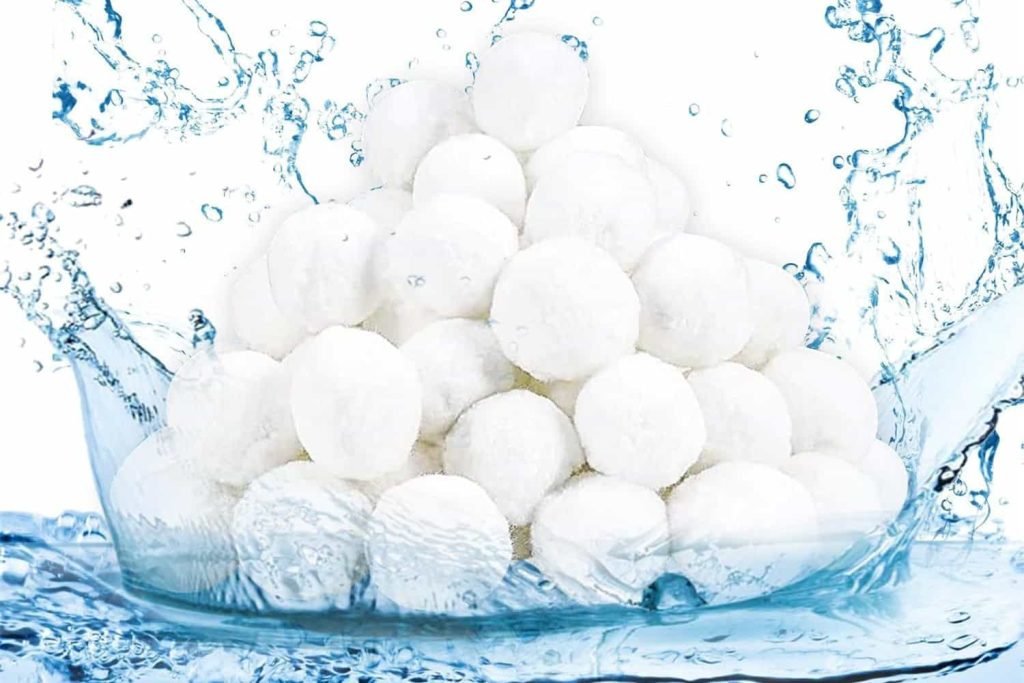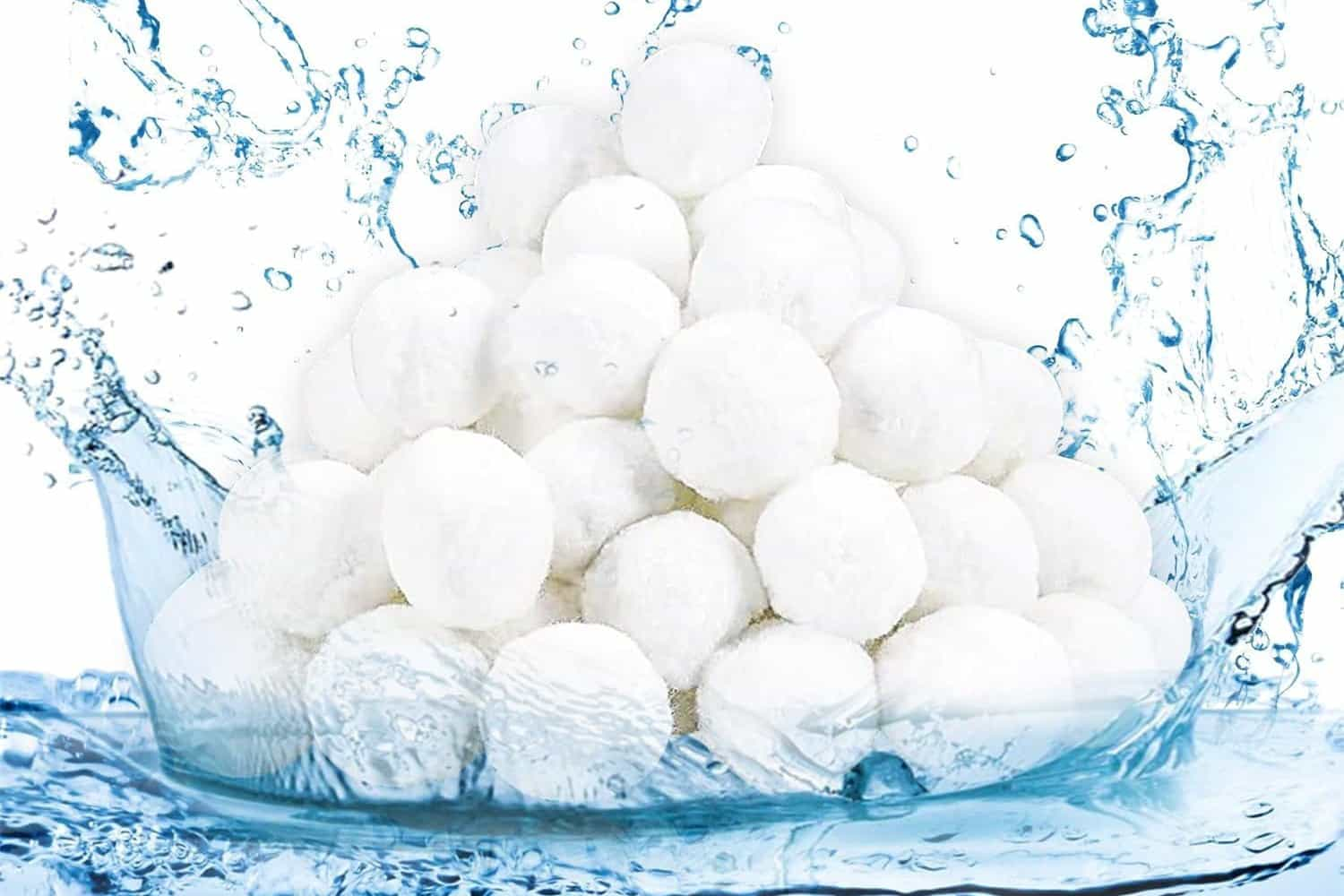Filter balls have revolutionized water filtration systems across the globe. From their humble beginnings to becoming a cornerstone of modern water treatment, these innovative filtration materials have significantly transformed how we manage and purify water. With advancements in technology, filter balls have replaced traditional sand filters in many applications due to their efficiency, lightweight structure, and eco-friendliness. In this article, we’ll discuss the history of filter balls, their evolution, and why they are considered a game-changing solution in water filtration systems today.

The Birth of Filter Balls: Addressing a Growing Need
The concept of filter balls originated from the need for a more effective and sustainable alternative to traditional filtration methods, such as sand and gravel filters. Early filtration systems relied heavily on heavy, cumbersome materials that were difficult to handle and clean. Over time, these systems revealed inefficiencies such as clogging, inconsistent filtration, and environmental concerns caused by material wastage.
Filter balls emerged in the late 20th century as a response to these challenges. Made from high-quality polyethylene or other durable materials, they offered a lightweight and highly effective solution for water filtration. These tiny spheres were engineered to trap impurities while maintaining optimal water flow, addressing the drawbacks of traditional filtration systems.
How Filter Balls Evolved Over Time
1.Early Adoption in Pool Filtration
The first widespread use of filter balls was in swimming pools, where their efficiency in removing fine particles while maintaining steady water circulation quickly gained attention. Unlike sand filters, filter balls did not require frequent backwashing, reducing water waste and maintenance costs.
2.Expansion into Industrial Applications
As their reliability became evident, filter balls were adapted for use in industrial water treatment facilities. Their ability to handle high volumes of water while maintaining filtration precision made them indispensable in industries such as food processing, pharmaceuticals, and power plants.
3.Recent Innovations
Modern-day filter balls are manufactured with advanced materials that enhance their filtration capacity and durability. For example, certain models now incorporate antimicrobial properties to prevent bacterial growth, making them ideal for applications in clean water systems. Leading filter balls manufacturers continue to innovate, pushing the boundaries of filtration technology to meet the increasing demand for sustainable solutions.
Why Filter Balls Have Become a Core Tool in Water Treatment
The rise of filter balls as a core tool in water treatment is no coincidence. Their unique features address the critical challenges faced by traditional filtration systems. Below are the reasons why filter balls have gained prominence:
1. Efficiency in Filtration
Filter balls can trap particles as small as a few microns, ensuring high water clarity. This makes them ideal for applications requiring fine filtration, such as swimming pools and aquariums.
2. Lightweight and Easy to Handle
Compared to traditional sand filters, filter balls are much lighter and easier to transport and install. This feature has been a game-changer for industries needing to replace or upgrade filtration systems quickly.
3. Eco-Friendly
Filter balls require less frequent cleaning and backwashing, saving significant amounts of water. Additionally, high-quality best filter balls are often made from recyclable materials, aligning with global sustainability goals.
4. Durability and Longevity
Unlike sand or gravel, filter balls do not degrade or break apart over time. This reduces the frequency of replacement, further minimizing waste and costs.
Applications of Filter Balls in Modern Water Treatment
Filter balls have become indispensable in a wide range of applications:
1. Swimming Pools
In swimming pool systems, filter balls replace traditional sand filters to provide superior water clarity with minimal maintenance. They effectively remove dirt, oils, and fine particles without requiring frequent backwashing.
2. Industrial Water Treatment
Industries rely on filter balls to ensure water used in production processes meets strict quality standards. Their ability to handle high-pressure systems makes them ideal for large-scale operations.
3. Aquariums and Fish Farming
Filter balls provide the perfect balance between filtration efficiency and water flow, creating a healthy environment for aquatic life. Their antimicrobial properties also reduce the risk of waterborne diseases.
4. Household Water Purification
With the rise of compact water purification systems, filter balls are increasingly being used in household settings to deliver clean, safe water for everyday use.
Future Trends in Filter Ball Technology
The demand for innovative filtration solutions continues to grow, and filter balls manufacturers are at the forefront of this evolution. Here are some exciting trends to watch:
1. Smart Filtration Systems
Incorporating IoT (Internet of Things) technology, future filter ball systems may include real-time monitoring of water quality and automatic cleaning mechanisms.
2. Enhanced Material Composition
Research into advanced materials, such as nanotechnology-infused polymers, is paving the way for best filter balls with even greater filtration efficiency and durability.
3. Sustainability Focus
Manufacturers are prioritizing eco-friendly production processes and materials to reduce the environmental footprint of filter balls.
Conclusion
From their humble beginnings as a replacement for traditional sand filters, filter balls have evolved into a versatile and indispensable tool in modern water treatment. Their efficiency, eco-friendliness, and adaptability have made them a preferred choice across various industries. As technology advances, the future of filter balls looks brighter than ever, promising even greater innovations to address global water challenges. With the right choice of filter balls, you can enjoy cleaner, safer water while contributing to a more sustainable planet.

